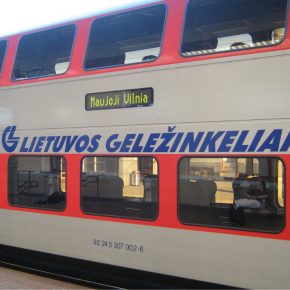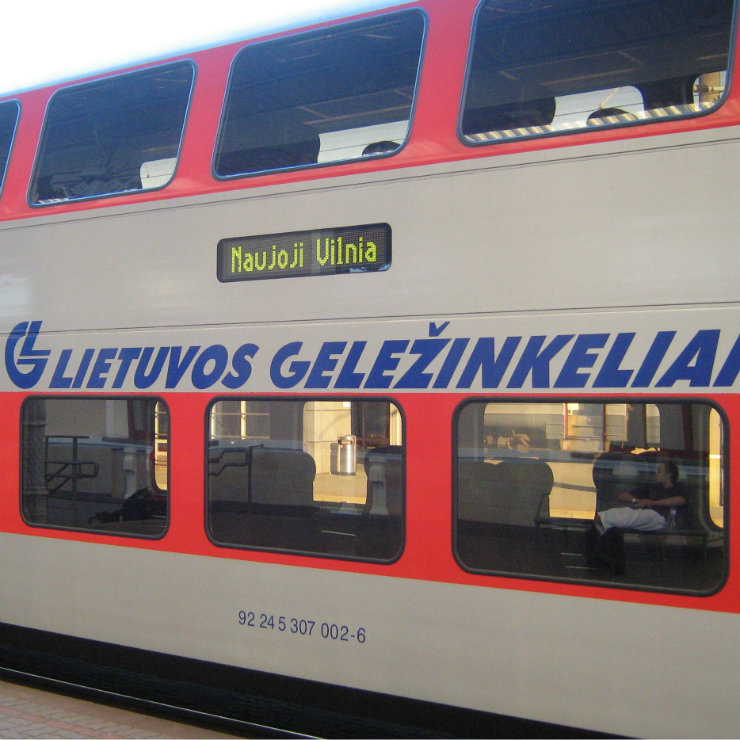
(hakzelf, CC BY)
“Our goal is to become the logistics and mobility leader in Central Europe by 2030” said Mantas Bartuska , CEO of Lithuanian Railways. The company wants to increase its freight volume to 70 million tons, an increase of 30 per cent, and the passenger number to 8 million by 2030. The plans for growth are linked to the rapidly developing Chinese market. “We can reach that by knowing the client better, connecting European and Chinese markets” said Egidijus Lauzaskas form the Lithuanian Railways Freight Transport Directorate.
Lithuania is also the recipient of the major share of the European Commission’s latest grant for Rail Baltica project. The grant was signed on July 2018, and amounts to EUR110m. The program is under the aegis of the Connecting Europe Facility (CEF). EUR98.4m is earmarked for Lithuania, EUR6.9m for Latvia and EUR5.1m for Estonia. However, the countries must also contribute their share which amounts to EUR17.2m, EUR1.1m and EUR900,000, respectively.
The money will be spent on construction work from Kaunas (the second largest city in Luthiania) to the Latvian border. Access roads, a bridge over the river Neris, and the preparation work on the Pärnu (in Estonia) to the Latvian border section, as well as Latvian maintenance facilities and their approach routes are going to be included.
The European Union funding has reached a total of EUR824m and the CEF tranche accounts for up to 85 per cent of the total costs up to a maximum of EUR683m.
EUR286m are eligible costs for Lithuania, and European Commission’s support for this country amounts to EUR242m. The figures for Latvia are EUR303m and EUR247m, and for Estonia EUR235m and EUR194m respectively.
Trouble with the workforce
A possible fly in the ointment is the availability of a workforce to build the railway. This was highlighted by Kaspars Rokens, COO of RB Rail recently. The Baltic States are being denuded of their populations chiefly through emigration and a slow birth rate. Stratfor, a think-tank reported as early as 2013, citing Eurostat figures, that Latvia will lose 10 per cent of its population by 2030, Lithuania 8.6 per cent and Estonia 4.5 per cent. Eurostat figures from 2017 seem to confirm this trend.
“We will not be able to finish this project without using [a] foreign workforce as there are other infrastructure projects built at the same time,” Mr. Rokoens said nad added “This will be a great challenge for the government to organize both immigration procedures, as well as the accommodation of workers”. But he remains confident that local contractors could account for up to and even above 60 per cent of the work.
Procurement would be an open tender according to European Union procedures but the price will be but one third of the overall consideration.
“We are not ruling out procurements with one bidder, but we are ruling out that procurements could be formed after one single bidder. We wish to see at least three bidders, and then we can be sure that at least one of them will qualify. Otherwise, market participants may say that this is not equal treatment”, Rokens stated. “There are equal opportunities for entrepreneurs of Europe and the Baltic states and a large part of the money will remain in the Baltic countries,” he concluded.

